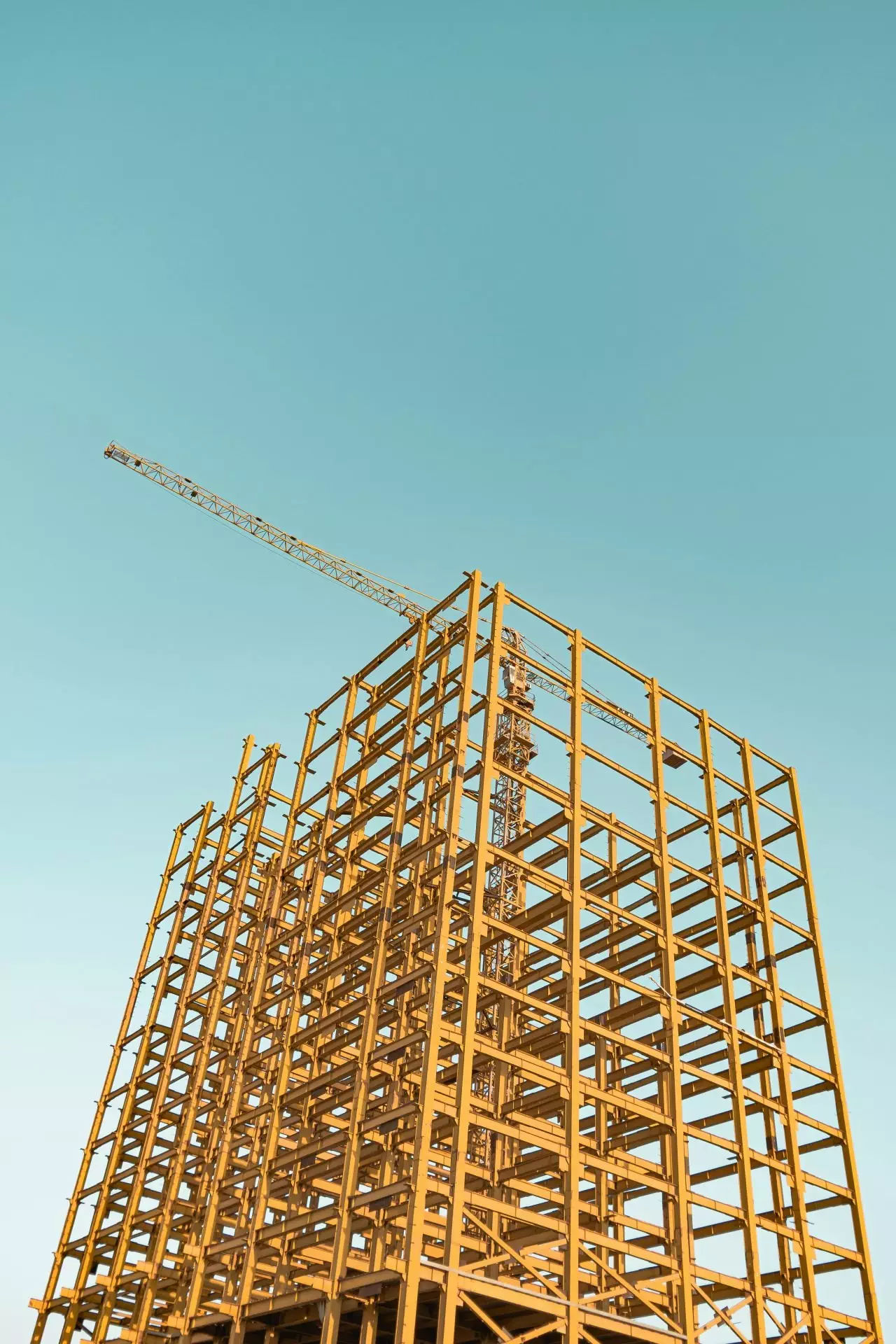Introduction
Changes to the agreed scope of work, known as variations, are a common occurrence in the construction industry. Understanding how to manage these variations is important for both builders and clients, as they can affect project timelines, costs, and the final outcome. Properly handling variations helps keep projects running smoothly.
This article examines the nature of contract variations, explaining what qualifies as a variation and what does not. It also looks into common reasons for these changes, their potential effects on the contract, and practical ways to manage them effectively, aiming to prevent disputes and keep projects on schedule and within budget.
What is a Variation?
A variation is a change to the scope of work under a contract. It can involve modifications to the work that contractors or consultants are required to perform. Variations are broadly defined in most standard form contracts and can include:
- Increasing, decreasing, or omitting any part of the work under the contract.
- Changing the character or quality of any material or work.
- Altering the levels, lines, positions, or dimensions of any part of the work.
- Carrying out additional work.
- Demolishing or removing material or work that is no longer required.
Essentially, a variation modifies the originally agreed-upon scope of work and can be initiated by either party or due to circumstances beyond their control, such as latent conditions or changes in legislative requirements.
What Cannot be Considered a Variation?
Several situations cannot be considered a variation:
- Items Specifically Provided for in the Contract: Any work or material that is already specified within the contract is not a variation.
- Improving Quality Without Instruction: If the contractor supplies material of better quality than required by the contract without being instructed to do so by the principal, they cannot charge the extra cost as a variation.
- Uncalled-for Work Without Instruction: Any additional work done by the contractor that is not required by the contract and not instructed by the principal cannot be charged as a variation.
- Indispensably Necessary Works: Works that are indispensably necessary for the completion of the project, even if not explicitly mentioned in the contract, are not considered variations. For example, supplying hinges for doors, although not specifically mentioned, would be necessary for completing the work.
- Design Developments in Certain Cases: Design developments can be considered variations, but this depends on the specific circumstances and the terms of the contract. The key points to consider include:
- Initial Scope of Design: If the design provided at the time of the contract was incomplete, any further development needed to complete that design might not be considered a variation.
- Point of Full Exposure: Once a design component has been “fully exposed” (i.e., fully documented and completed), any further refinement of that design is typically not a variation. However, changes beyond refinement could be considered variations.
- Consequential Impact: Changes that result from the development of a related design component might not be considered variations if they are consequential. For example, changes on one floor due to design development on another floor where the designs are interconnected.
- Clear Additions: If new elements are added that were not part of the initial design, such as adding toilets where none were previously planned, these changes are considered variations.
Get legal advice you can rely on.
Contact us today.
Common Reasons for Variations
Variations in construction projects can occur due to several reasons, often stemming from different stakeholders or unexpected circumstances. Here are some common causes of variations:
- Requests from Homeowners: Homeowners might want to modify the project to better align with their preferences or requirements. This could involve changes in finishes, materials, or adjustments to the original design or specifications.
- Unanticipated Site Conditions: During construction, unforeseen issues or challenges might arise, necessitating changes to the original plan. For instance, discovering an underground water source could require adjustments to the building’s foundation.
- Updates to Regulations or Codes: Over time, building codes and regulations can change, requiring builders to alter their plans to remain compliant. Non-compliance with these updated requirements can result in fines or legal complications.
- Delays Initiated by Homeowners: Homeowners can cause delays by not providing materials or making payments on time, or by requesting changes to the project mid-way. Such delays can lead to additional costs for the builder, which may need to be passed on to the homeowner.
- Modifications to the Original Design or Specifications: As the project advances, builders might find it necessary to modify or refine certain aspects of the original plan. For example, a particular material specified in the initial contract might become unavailable, requiring a substitution.
- Errors or Omissions in the Initial Contract: Mistakes or omissions in the original contract can necessitate modifications. If the contract fails to specify a particular material or finish, the builder may need to seek clarification or agreement from the homeowner.
While variations are sometimes unavoidable, they can be a source of conflict between builders and homeowners. Therefore, it’s crucial to have a well-defined contract that clearly outlines the procedures for requesting and approving variations, helping to manage these changes smoothly.
How Does a Variation Impact Construction Contracts?
A variation can have several significant impacts on a construction contract, affecting various aspects of the project. Here are the key impacts:
- Cost Implications: Variations often lead to additional expenses. Changes to the scope of work, materials, design, or specifications typically require more labour and materials, which can increase the overall project cost. Builders might also include an additional margin for overhead and profit. Homeowners need to be aware of these costs and budget accordingly.
- Project Timeline: Variations can disrupt the original project timeline. Adjustments to the work may require additional resources, approvals, or materials, leading to delays. The negotiation and approval process for these changes can also extend the project’s completion date. Effective management of variations is crucial to minimise delays.
- Payment Terms: Variations can affect the payment schedule. The terms for paying for variations might differ from those in the original contract. Builders often require payment for variations upon completion of the work or even before starting the work. Establishing clear payment terms for variations helps manage cash flow and prevent disputes.
- Scope of Work: Variations alter the original scope of work outlined in the contract. This can involve increasing, decreasing, or modifying the work to be done. Clear documentation and approval of these changes are necessary to avoid misunderstandings about what is included in the project.
How to Request for Variations?
The process of requesting a variation in a construction contract typically involves several key steps:
- Prepare the Variation Request: The homeowner or contractor drafts a request detailing the proposed changes to the original contract. This request should include the reason for the change and any relevant drawings, plans, or specifications.
- Submit the Variation Request: The variation request should be submitted promptly to prevent delays. The original contract usually specifies the timeframe for submitting such requests.
- Review and Approval: The builder or contractor reviews the request to assess its feasibility and impact on the project’s timeline and cost. If approved, the builder provides a variation quote for the homeowner to review and sign.
- Communication and Documentation: All related communication and documentation should be recorded in writing to avoid misunderstandings or disputes. The builder or contractor should maintain a record of all correspondence regarding the variation request.
- Issue of Formal Instruction: Upon approval, a formal instruction to execute the variation is issued as specified in the contract, typically involving a written notice from the principal or superintendent.
What are Some Common Disputes Related to Variations?
Variations in building contracts can have significant legal implications for both homeowners and builders as they modify previously agreed upon terms and conditions. Due to this, a range of disputes are likely to arise as a result of variations. The following case studies highlight the key disputes related to variations and the associated reasons:
Fundamental Change to Scope of Works
The most common point of contention that leads to disputes is whether a variation fundamentally changes the scope or value of the original contract works. In Chadmax Plastics Pty Limited v Hansen and Yuncken (SA) Pty Ltd (1984) 1 BCL 52, the principal decided to change the specified ‘Wallflex’ finish, resulting in 98% of the work being deleted from the subcontract. The court found that the variation amounted to a virtual cancellation of the subcontract and awarded damages for breach of contract, recognising the improper use of variation power to fundamentally alter the works.
Deletion of Works and Engagement of Another Contractor
At times, variation leads to a principal effectively deleting works from the original contractor’s scope and engaging another contractor to perform those works. In the case of Carr v JA Berriman Pty Ltd (1953) 89 CLR 327, the principal deleted the steelwork from the contractor’s scope and engaged a third party to perform the work. The court held that the architect’s power to omit work did not extend to allowing another contractor to perform it, indicating that such power requires very clear contract terms and would otherwise be considered unreasonable.
In another case, Commissioner for Main Roads v Reed & Stuart Pty Ltd (1974) 131 CLR 378, the principal engaged a third party to supply topsoil, avoiding paying the contractor the agreed rate. The court found this to be a breach of contract as the principal did not have the authority to reassign the work to another contractor.
Variations After Practical Completion
When is a variation requested during a project’s lifecycle can also lead to disputes. For instance, in J&W Jamieson Constructions Ltd v Christchurch City (1986) 3 NZCLC 99, the principal attempted to instruct variations after the date for practical completion. The court held that without express contractual power, the principal cannot instruct variations post-practical completion.
Valuation and Payment for Variations
How variations are valued and whether the contractor is entitled to reasonable rates or agreed contract rates for additional works can often lead to disputes. In Vadasz v Gadaleta Steel Fabrication Pty Ltd [2015] SASC 162, a dispute arose over the hourly rate for variations claimed by the subcontractor. The court upheld the agreed rate of $75 per hour, rejecting the subcontractor’s higher rate claim, emphasising that agreed rates in the contract are binding unless varied with proper authority.
Recovery of Delay or Disruption Costs Due to Variations
The contractor’s right torecover costs for delays or disruptions caused by variations, especially when the contract includes exclusion clauses for such costs, may also lead to disputes. In the case of Lucas Earthmovers Pty Limited v Anglogold Ashanti Australia Limited [2019] FCA 1049, the contractor sought to recover delay costs resulting from additional works that were agreed to be a variation. The court found that while direct costs were recoverable, the exclusion clause in the contract prevented the recovery of time-related costs associated with delays, underscoring the need for clear contract terms regarding the recovery of such costs.
Speak to a Lawyer Today.
We respond within 24 hours.
How to Avoid and Manage Disputes Related to Variations?
Preventing disputes related to the variation of construction contracts involves clear, comprehensive, and precise contract drafting, effective communication, and proactive management. Here are some strategies to minimise disputes:
Clear and Precise Contract Terms
- Define Variation Powers: Clearly outline the principal’s powers to instruct variations and any limitations on these powers. Specify what constitutes a permissible variation.
- Scope and Value Limits: Include provisions that limit variations to changes that do not fundamentally alter the scope or value of the works.
- Variation Process: Detail the procedure for issuing and approving variations, including who has the authority to approve them and the documentation required.
Explicit Provisions for Post-Completion Variations
- Post-Completion Variations: If variations might be needed after practical completion, explicitly include provisions allowing for this and outline the process and limitations for such variations.
Valuation and Payment Clauses
- Pricing Mechanisms: Include detailed clauses on how variations are to be valued. This can include a hierarchy of methods, such as pre-agreed rates, contract rates, or reasonable rates.
- Documentation Requirements: Specify the documentation needed to support claims for variations, including cost breakdowns and approval signatures.
Limitations on Deleting and Reassigning Works
- Deletion Clauses: Clearly state the principal’s limitations regarding deleting works and reassigning them to other contractors. Specify that any deletion should not be performed with the intention of having another contractor complete the works unless explicitly permitted by the contract.
Dispute Resolution Mechanisms
- Dispute Resolution Clauses: Include clear dispute resolution mechanisms in the contract, such as mediation, arbitration, or adjudication, to resolve disputes efficiently before escalating to litigation.
- Early Notification and Resolution: Encourage early notification of potential disputes and provide for early resolution mechanisms to address issues promptly.
Effective Communication and Record-Keeping
- Regular Communication: Maintain open lines of communication between all parties involved in the project to discuss potential variations and their implications.
- Record-Keeping: Keep detailed records of all communications, instructions, and approvals related to variations. This documentation can be crucial in resolving disputes if they arise.
Training and Awareness
- Contractual Awareness: Ensure that all parties, including contractors and subcontractors, understand the terms of the contract related to variations. This includes training on the procedures and limitations of variations.
- Regular Updates: Regularly update all parties on the status of variations, including any changes in scope, costs, or completion dates.
Regular Review and Amendments
- Review Contract Terms: Regularly review contract terms and update them to reflect changes in law, industry practices, or lessons learned from previous projects.
- Amendments and Addenda: Use formal amendments or addenda to the contract to address any changes or new understandings related to variations, ensuring all parties agree and sign off on these changes.
Seeking Legal Advice
In some cases, it may be necessary to seek legal advice to ensure that the contract adequately protects both parties. Expert legal advice can help identify potential issues and ensure that variations are handled in a manner that minimises legal risks.
Key Takeaways
Managing variations effectively is fundamental to the success of any construction project, preventing disputes and ensuring projects stay on schedule and within budget. Understanding what constitutes a variation, the common reasons they arise, their impact on contracts, and the proper procedures for requesting and approving them are key for both builders and clients.
Implementing clear contract terms, maintaining open communication, and adhering to agreed-upon processes for handling changes are crucial strategies for avoiding conflicts. For expert guidance on drafting contracts or managing variations to minimise disputes, Contact PBL Law Group to consult with our experienced NSW construction lawyers and ensure your projects proceed smoothly and successfully.







